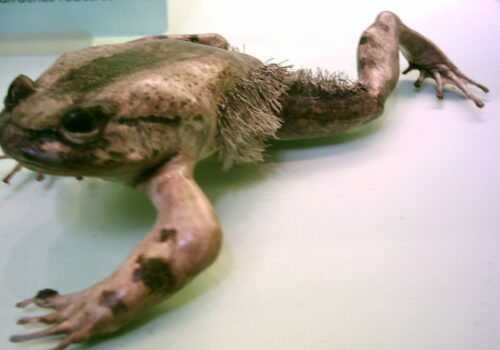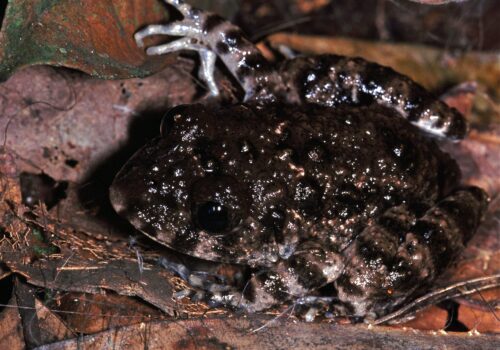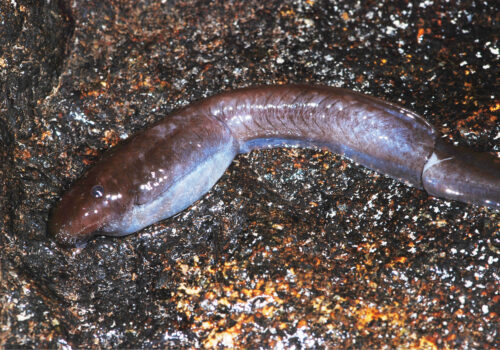- Introduction: Uncovering the Elusive Beauty of Leptopelis susanae
- Taxonomy and Classification: Placing Leptopelis susanae in the Amphibian World
- Natural Habitat: Apeaking into Tanzania’s Misty Mountain Forests
- Physical Characteristics: Remarkable Adaptations for Survival
- Behavior and Life Cycle: A Symphony of Nighttime Calls
- Ecological Role: Guardian of Forest Balance
- Threats and Conservation Status: Vulnerability in Paradise
- Cultural and Scientific Significance: More than Just a Frog
- Conclusion: Safeguarding Tanzania's Frog Jewel
Introduction: Uncovering the Elusive Beauty of Leptopelis susanae#
Deep within the serene forests and verdant mountainsides of Tanzania, hidden among lush foliage and vibrant orchids, lives a striking yet elusive amphibian—the Susa Forest Tree Frog, scientifically known as Leptopelis susanae. Named after the lush, mist-shrouded forests it inhabits, this charming species captivates both researchers and wildlife enthusiasts with its secretive nature and intriguing ecology.
With its subtle green and brown hues perfectly matching its forest surroundings, the Susa Forest Tree Frog exemplifies nature’s artistry in adaptive camouflage. This shy resident of Tanzania’s forests symbolizes the delicate balance of intricate ecosystems under looming threats from habitat loss and climate change. Join me in uncovering the captivating life cycle, unique behaviors, and vital conservation importance of Leptopelis susanae.
Taxonomy and Classification: Placing Leptopelis susanae in the Amphibian World#
The delicate yet resilient Leptopelis susanae belongs to the diverse amphibian family Arthroleptidae, nested within the tree frog genus Leptopelis. First scientifically described just over half a century ago, this species shares lineage with over 50 related species found across sub-Saharan Africa.
Within its genus, Leptopelis susanae shares evolutionary roots with closely related species such as Leptopelis flavomaculatus and Leptopelis parkeri. Together these frogs highlight a continental story of adaptation and diversification, uniquely tailored to African rainforests and mountainscapes.
Natural Habitat: Apeaking into Tanzania’s Misty Mountain Forests#
Endemic solely to Tanzania, Leptopelis susanae makes its home mainly in the magnificent montane and submontane forests in the Eastern Arc Mountains, notably within the Nguru and Uluguru mountain ranges. These lush habitats are truly ecological gem—characterized by deep valleys, steep slopes, draped in an almost perpetual mist. The cool and humid conditions of these montane regions provide the essential moisture and shelter required by tree frogs, creating a perfect sanctuary for our elusive amphibian friend.
The Perfect Forest Home#
Within its favored habitat heights approximately from 900 to 1600 meters above sea-level, Leptopelis susanae exhibits exceptional adaptation suited to arboreal life. Preferring a canopy life hidden among broad-leaved vegetation, moss-covered branches, and epiphytic plants, this tree frog uses its specialized gripping toes to expertly maneuver vertical foliage. This extraordinary arboreal skill keep them safely out of reach from most ground predators, shaped by generations of evolutionary fine-tuning.
Physical Characteristics: Remarkable Adaptations for Survival#
The Susa Forest Tree Frog measures at a modest but elegant size, usually reaching lengths between 30 to 50 millimeters, with females typically larger than their male counterparts. The species’ colouration is exceptional—a delicate mosaic of rich olive green or brown hues decorated with subtle darker markings or spots, mirroring perfectly the moss-covered branches and leaves they call home.
A Master of Camouflage#
The cryptic hues and patterns not only protect the frog from potential predators but also perfectly illustrate nature’s efficiency. Their remarkably translucent skin helps the frog absorb moisture directly from ambient humidity, making these frogs exquisite regulators of their habitat and allowing them to thrive in moisture-laden environments.
Eyes Adapted for Moonlit Hunts#
A distinctive trait of the genus Leptopelis is their striking large, forward-facing eyes, embellished by vertical elliptical pupils capable of remarkable nocturnal vision. These keen, glowing eyes enable them to swiftly capture prey during nights accentuated by shimmering moonlight peeking through dense foliage.
Behavior and Life Cycle: A Symphony of Nighttime Calls#
As twilight envelops the dense alleys of the Tanzanian jungles, the subtler daytime sounds gradually melt away. The forest awakens anew as male Susa Forest Tree Frogs embark on their nightly serenades to attract females. Their calls—distinct, melodious series of brief whistles—echo through the mist-covered forests, composing a symphony integral to the forest’s acoustic ecosystem.
Breeding and Tadpole Development#
Once a female has accepted the male’s serenade, she deposits jelly-like eggs in carefully selected aqueous habitats. Unlike many frogs that use flowing streams and open waterways, Leptopelis susanae favors secluded, stagnant pools or water-filled hollows within trees—safe havens from canopy-dwelling predators. From these guarded nurseries emerge tiny tadpoles, taking several weeks or even months to grow and metamorphose fully into capable young froglets.
Feeding Habits: Ald the Hunts in the Night Canopy#
The tree frog primarily feeds on insects, expertly catching elusive prey like moths, flies, beetles, and spiders. Its ability to react swiftly, aided by powerful hind limbs and flexible toepads, ensures hunting efficiency throughout its arboreal landscape.
Ecological Role: Guardian of Forest Balance#
As an insect predator, Leptopelis susanae provides invaluable ecosystem stability, helping control insect populations naturally. Simultaneously, this small amphibian species serves as critical prey for numerous birds, tree snakes, and mammals, therefore playing dual ecological roles—predator and prey—which profoundly influence rainforest food webs.
Threats and Conservation Status: Vulnerability in Paradise#
While the rich montane forest habitats of Tanzania possess unparalleled biodiversity, these fragile ecosystems face growing threats. IUCN lists Leptopelis susanae as “Endangered,” primarily citing habitat loss due to agriculture, logging, and encroachment from expanding human settlements. Additionally, climate change exacerbates the risks by altering rainfall patterns, reducing mist cover, and consequently disrupting critical microhabitats.
Efforts in Conservation and Habitat Restoration#
Several Tanzanian natural reserves, along with global conservation initiatives, strive tirelessly for the preservation and rehabilitation of amphibian-friendly, protected forest habitats. Education programs across local communities promote awareness and appreciation for this enigmatic frog, significantly boosting regional conservation efforts.
Cultural and Scientific Significance: More than Just a Frog#
Within local cultures, frogs symbolize resilience, wisdom, and renewal—a reflection of their life cycle and adaptive prowess. Scientifically, Leptopelis susanae holds immeasurable importance as a biological indicator, with their presence signaling healthy, intact montane ecosystems. The study of such sensitive amphibians provides significant insights into climate change’s tangible effects, acting as an early warning system for environmental health deterioration.
Conclusion: Safeguarding Tanzania’s Frog Jewel#
The Susa Forest Tree Frog, Leptopelis susanae, exemplifies Tanzania’s rich biological heritage, delicately balancing survival amid mounting environmental pressures. Now more than ever, understanding and safeguarding these intriguing creatures reveals the interconnectedness between subtle forest forms and humanity’s sustainable future.
Awareness coupled with active participation—whether through advocacy, support for conservation programs, or fostering local ecological understanding—can make a profound difference in shaping the destiny of these secures moisten realm dwellers. Let us all embrace stewardship roles in protecting these remarkable amphibian custodians of biodiversity, recognizing them as truly indispensable inhabitants of East African forest ecosystems.









